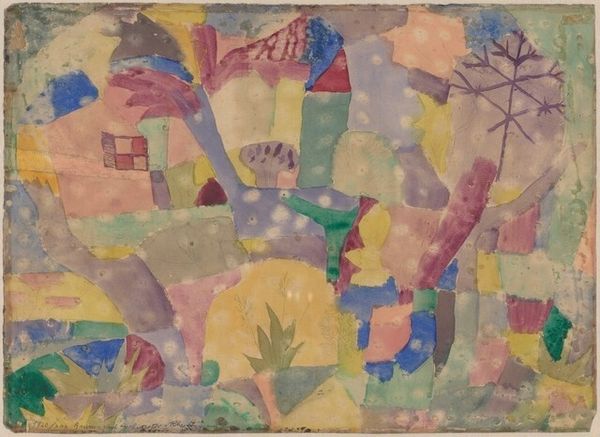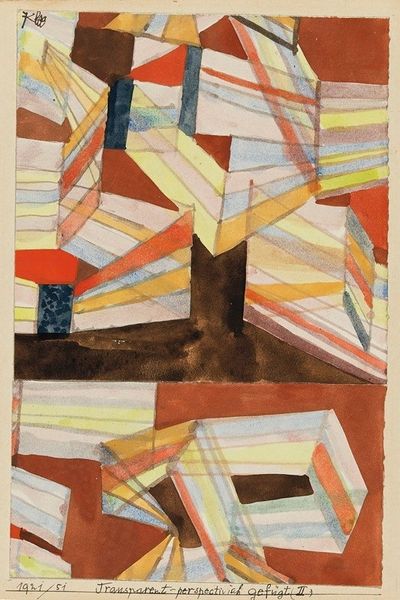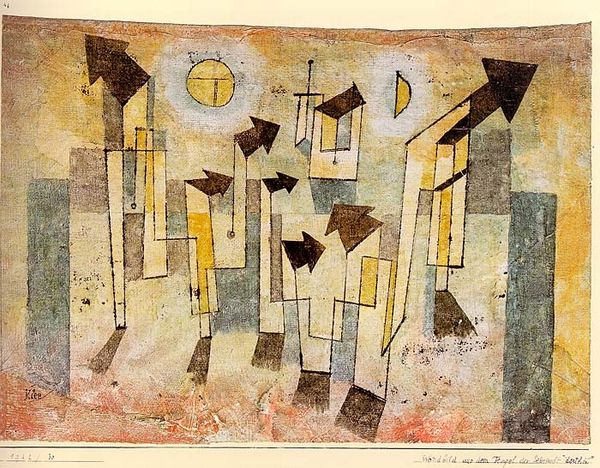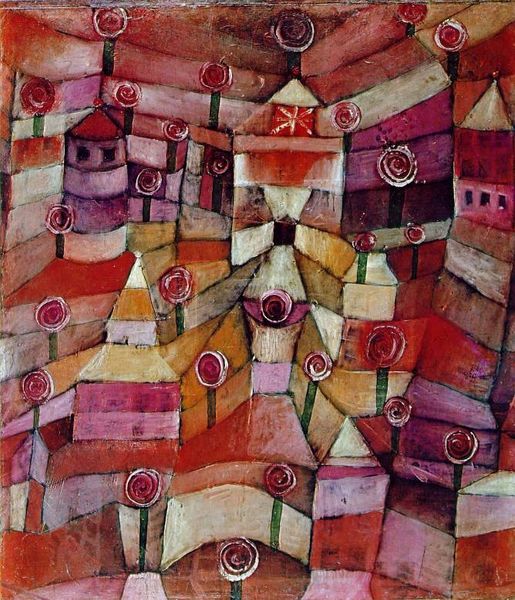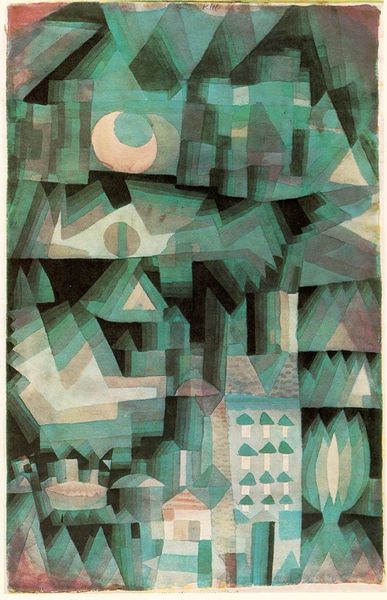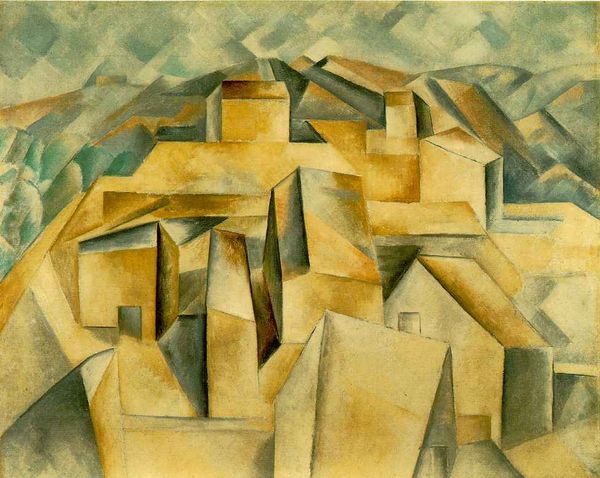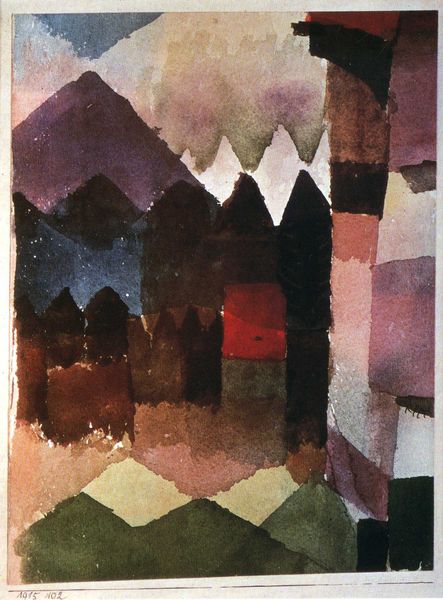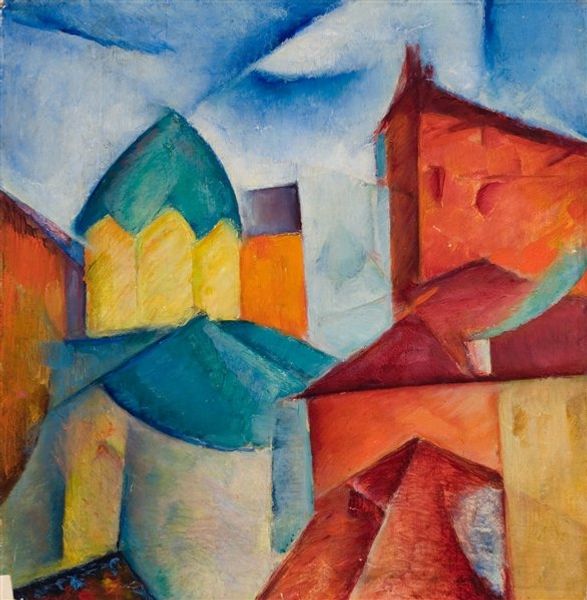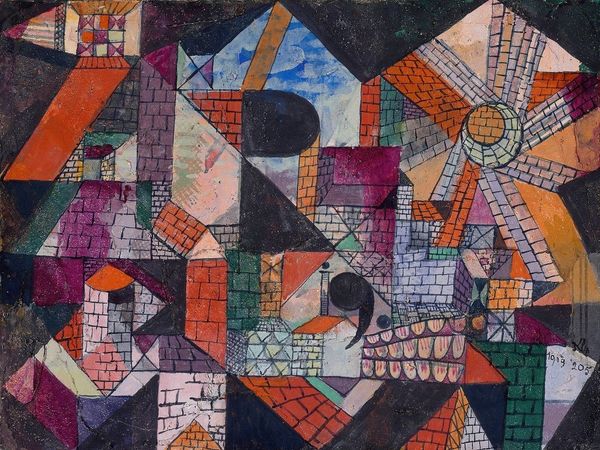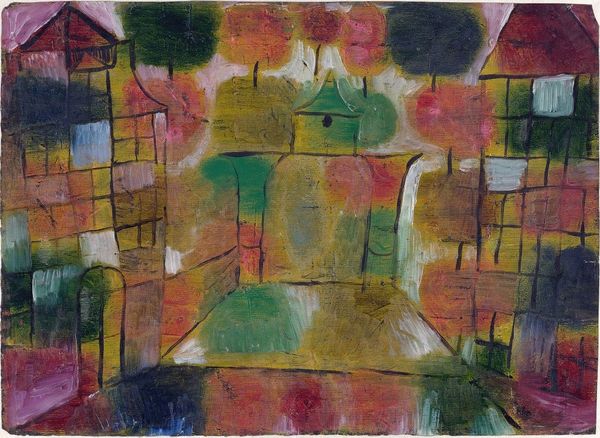
watercolor
#
cubism
#
water colours
#
landscape
#
watercolor
#
geometric
#
abstraction
#
cityscape
#
bauhaus
#
watercolor
Dimensions: 31.5 x 24.5 cm
Copyright: Public domain
Curator: Paul Klee's "Oriental Architecture," created in 1929, is a captivating watercolor currently held in a private collection. It represents a unique blend of cubist sensibilities applied to a cityscape, seemingly viewed through the lens of abstraction. Editor: The overall feeling is almost dreamlike. There is something soothing and harmonious, though restrained. The warm yellows at the base ground the structure that gently dissolves into a hazy, serene atmosphere at the top. Curator: Klee's work here encapsulates a fascinating intersection of influences, drawing from his time teaching at the Bauhaus, a school renowned for integrating art, craft, and technology. It prompts us to consider the relationship between design principles, societal changes, and artistic creation in that era. The choice of watercolor as a medium lends an ethereality to what is still clearly architecture. Editor: Thinking about materiality, I wonder about his technique layering the colors in this watercolor. Was this produced by working directly onto the paper, or layering? We see these transparent blocks creating form—the process itself really seems at the heart of Klee’s investigation here. Were new materials available? Were there limitations within the workshop culture of the Bauhaus that drove his methods? Curator: That is precisely the point, it’s essential to explore these very real considerations. Bauhaus foregrounded practical artistic training and experimentation with industrial methods. We also have to examine Klee’s work within broader themes: His art often reflects on the effects of colonialism, on a larger sociopolitical context, by reimagining abstracted architectural spaces—is this "Orientalism", filtered, or critically reimagined through his lens? Editor: And while the title, "Oriental Architecture," clearly denotes an interest in forms perceived as "other," his work can also be appreciated for its subtle interplay between geometrical precision and delicate expression with limited materials, opening avenues for the investigation of global interconnectedness through artmaking during times of great political upheaval. Curator: Absolutely. It speaks volumes to his capability to work between tradition and contemporary social commentary through the canvas. Editor: Exactly, making visible those interconnected art and historical conditions. It gives us, even now, insight into past and present construction practices in painting and architecture, which provides great lessons to new generations of creators.
Comments
No comments
Be the first to comment and join the conversation on the ultimate creative platform.
